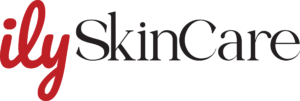Table of Contents
Introduction
Fungal acne Forehead, also known as Malassezia folliculitis, is a common skin condition often mistaken for traditional acne. Unlike bacterial acne, fungal acne is caused by an overgrowth of fungal acne forehead yeast (Malassezia) in hair follicles. The forehead is a common area for fungal acne due to excess oil and sweat.
This guide covers everything you need to know about fungal acne on the forehead—causes, symptoms, treatments, and prevention—to help you achieve clear, healthy skin.
Read also: Best Soap for Pimples: Clear Skin Starts Here
What is Fungal Acne?
Fungal acne is a type of folliculitis caused by Malassezia yeast, which naturally lives on the skin.
Key Differences Between Fungal Acne and Bacterial Acne
| Feature | Fungal Acne | Bacterial Acne |
|---|---|---|
| Appearance | Small, uniform bumps | Varied (blackheads, whiteheads, cysts) |
| Itchiness | Often itchy | Rarely itchy |
| Location | Forehead, chest, back | Face, jawline, chin |
| Cause | Yeast overgrowth | Bacteria (C. acnes), oil, dead skin |
Causes of Fungal Acne on the Forehead
Several factors contribute to fungal acne breakouts:
- Excess Sweat & Humidity – Trapped sweat creates a breeding “fungal acne forehead” ground for yeast.
- Oily Skin & Skincare Products – Heavy creams and oils feed Malassezia.
- Weakened Immune System – Illness or stress can trigger overgrowth.
- Antibiotic Use – Kills good bacteria, allowing yeast to thrive.
- Tight Clothing & Hats – Traps moisture, increasing fungal growth.
Symptoms of Fungal Acne on the Forehead
- Small, red, uniform bumps
- Itching or irritation
- Clusters of pustules
- No improvement with traditional acne treatments
How to Treat Fungal Acne on the Forehead
1. Antifungal Treatments
- Ketoconazole (Nizoral Shampoo) – Apply as a mask for 5-10 minutes.
- Clotrimazole Cream – Over-the-counter antifungal.
- Sulfur Soap – Natural antifungal and antibacterial.
2. Adjust Your Skincare Routine
- Use a gentle cleanser – CeraVe or Vanicream.
- Exfoliate with salicylic acid – Helps unclog pores.
3. Lifestyle Changes
- Wash your forehead after sweating
- Wear breathable fabrics
- Reduce sugar intake – Yeast thrives on sugar.
4. Prescription Treatments
- Oral antifungals (Fluconazole) – For severe cases.
- Topical antifungals (Econazole) – Prescribed by a dermatologist.
Preventing Fungal Acne on the Forehead: A Comprehensive Guide
Fungal acne (Malassezia folliculitis) thrives in warm, moist “fungal acne forehead” environments, making the forehead a prime target due to sweat, oil, and hair products. Prevention is key to avoiding recurring breakouts. Here’s a detailed, science-backed approach to keeping fungal acne at bay.
1. Maintain Proper Hygiene
Fungal acne feeds on sweat, oil, and dead skin cells. To prevent flare-ups:
✔ Wash your face twice daily – Use a gentle, antifungal cleanser (e.g., sulfur soap or zinc pyrithione wash).
✔ Shower immediately after sweating – Gym sessions, hot weather, or workouts can trigger fungal growth.
✔ Avoid touching your forehead – Hands transfer bacteria “fungal acne forehead” and oils that worsen breakouts.
2. Choose the Right Skincare Products
✅ Use fungal acne-safe products – Look for:
- Oil-free, non-comedogenic formulas
- Ingredients like niacinamide, squalane, or hyaluronic acid
- Avoid: Coconut oil, fatty alcohols (cetearyl alcohol), and esters (ethylhexyl palmitate).
🚫 Avoid heavy hair products – Conditioners, gels, and pomades can drip onto the forehead, clogging pores.
3. Control Excess Oil & Sweat
Oily skin creates an ideal environment for fungal acne.
✔ Blot sweat with a clean towel – Don’t let sweat sit on your skin.
✔ Try a mattifying sunscreen – Physical sunscreens (zinc oxide) are less likely to feed yeast.
4. Adjust Your Diet & Lifestyle
Diet can influence fungal overgrowth.
✔ Reduce sugar & refined carbs – Yeast thrives on sugar.
✔ Eat probiotic-rich foods – Yogurt, kefir, and fermented foods support “fungal acne forehead” healthy skin flora.
✔ Stay hydrated – Helps flush out toxins and regulate oil production.
5. Protect Against Friction & Trapped Moisture
Tight hats, helmets, and headbands can worsen fungal acne.
✔ Wear breathable fabrics – Cotton or moisture-wicking materials reduce sweat buildup.
✔ Clean headgear regularly – Helmets, caps, and headbands should be washed weekly.
6. Strengthen Your Skin Barrier
A compromised skin barrier makes fungal acne worse.
✔ Use ceramide-based moisturizers – Repairs the skin’s protective layer.
✔ Avoid over-exfoliating – Harsh scrubs can irritate “fungal acne forehead” and worsen fungal acne.
✔ Try tea tree oil (diluted) – Natural antifungal properties help prevent breakouts.
7. Prevent Recurrence with Antifungal Maintenance
Even after clearing fungal acne, preventive care is essential.
✔ Use an antifungal wash 1-2x weekly – Keeps yeast levels in check.
✔ Rotate antifungal treatments – Prevents resistance (e.g., ketoconazole, selenium sulfide).
✔ See a dermatologist if breakouts persist – Prescription antifungals “fungal acne forehead” may be needed.
FAQs About Fungal Acne on the Forehead
1. Can fungal acne spread?
Yes, if untreated, it can spread to the chest, back, and other oily areas.
2. Is fungal acne contagious?
No, it’s caused by an overgrowth of “fungal acne forehead” natural skin yeast.
4. Can diet affect fungal acne?
Yes, high sugar and dairy intake may worsen it.
Conclusion
Fungal acne on the forehead can be frustrating, but with the right treatment and prevention strategies, you can achieve clear skin. Focus on antifungal products, adjust your skincare routine, and maintain “fungal acne forehead” good hygiene.
For more expert skincare advice, check out these resources:

